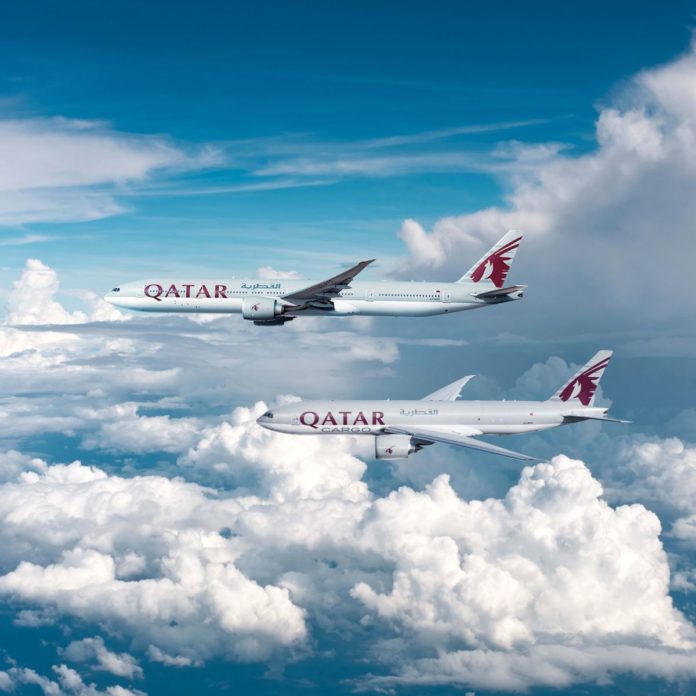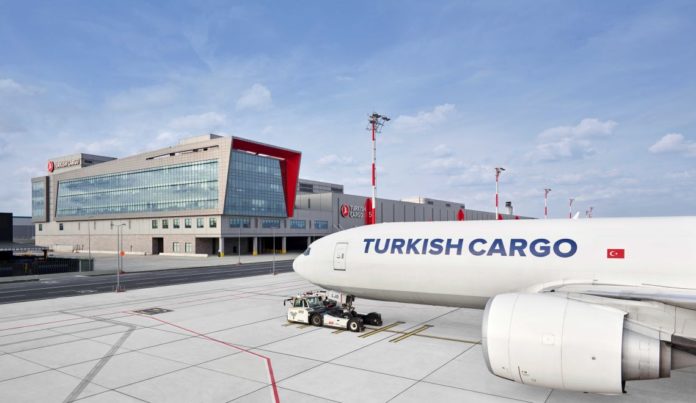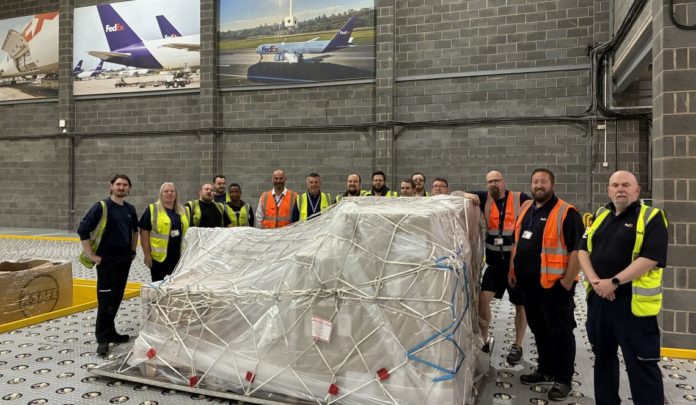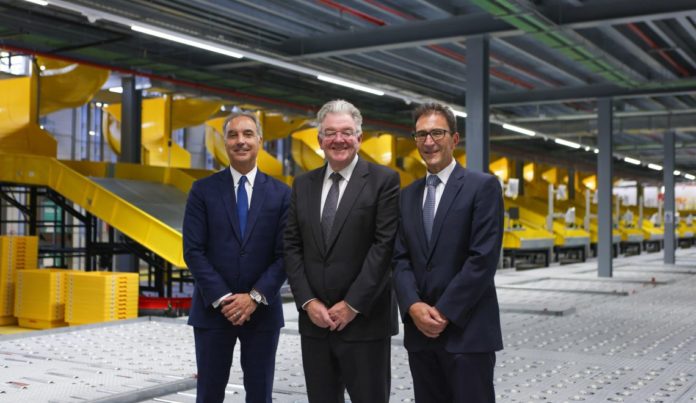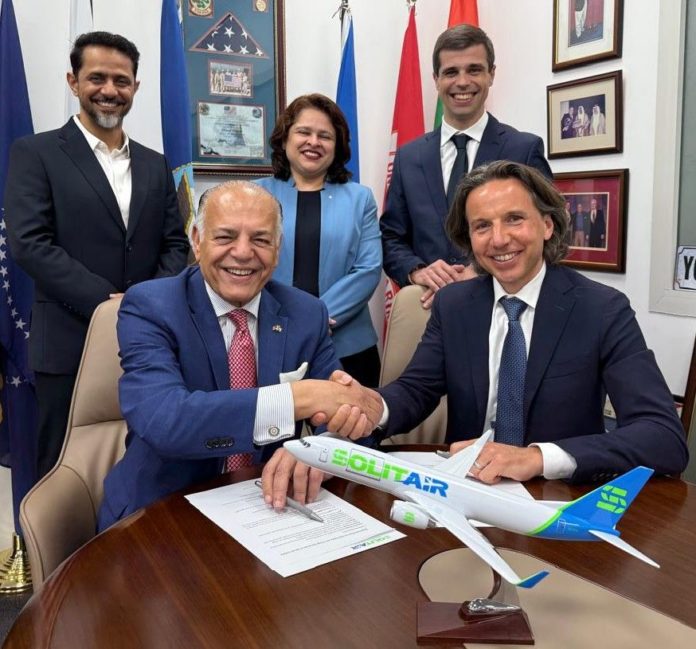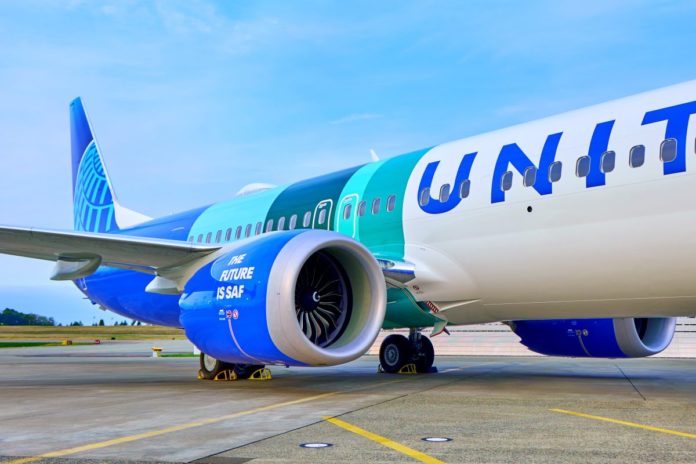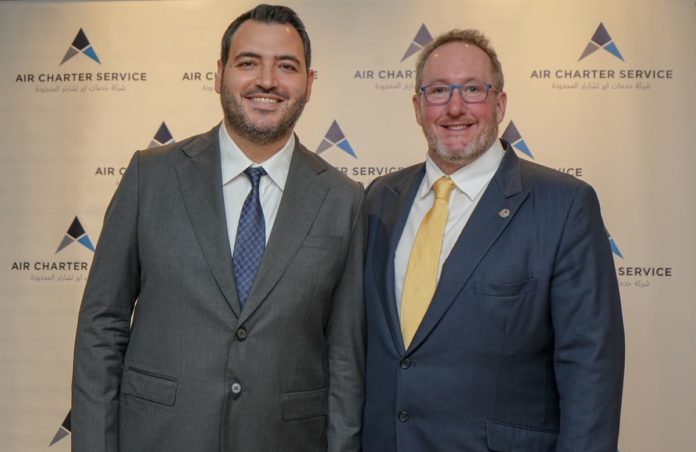Qatar Airways Cargo is increasing bellyhold capacity between its Doha hub and Sao Paulo from 14 to 18 weekly flights while Toronto goes up from five to seven weekly flights. There are also increased to London, Dublin, Madrid, Berlin, Frankfurt Casablanca, Cape Town, Johannesburg and the Far East. It has also upgraded its Zanzibar route toi a widebody aircraft.
Qatar adds space to the Americas
Global K9 signs Dutch deal
US-based air cargo security firm Global K9 has signed a partnership with Het Twickelerveld Cargo Screening in the Netherlands. Het Twickelerveld, established in 2005, is specializes in training and handling canines for cargo security. The two companies will collaborate across not only in canine operations, but X-ray, Explosive Trace Detection (ETD), and authorized representative work.
It follows Global K9’s acquisition of UK-based screening company, Dog Detectives, at the end of 2024.
Founder and chief executive, Eric Hare (pictured) said: “By combining our proven detection services with Het Twickelerveld’s local expertise, this agreement is aimed at replicating our successful US operations, providing enhanced security solutions across the region. Our goal is to provide the same level of excellence in Europe that our clients have come to expect in the US, building upon our growing global presence.”
Turkish Cargo launches aerospace offering
Turkish Cargo has launched TK Aero, a logistics product for the aviation industry. It offers two variants – TK Aero Spare for transportation of aircraft parts, including landing gear, wings, and avionics systems. There are no weight or size limitations and shipments enjoy priority handling and loading, with shipments directed to the first available flight at the SMARTIST facility in Istanbul Airport, shipments handled quickly are directed to the first available flight.
TK Aero Advanced is for large, heavy aircraft engines and helicopter components. Before each transport, an engineering analysis is conducted based on the component’s structure and aircraft type, and a customized loading scenario prepared and, for engine transport, standard 0perating procedures) specific to each type are applied.
A Certified Aircraft Loadmaster team ensures the operational plan is correctly implemented on site.
Requests for engine shipments are received digitally via the TKGO platform or website.
FedEx Express opens freight facility in British Midlands
Federal Express has opened a new 19,000 sq. ft facility at East Midlands Airport. It operates independently from the company’s existing parcel sorting operations and will enhance freight handling efficiency, while providing better connections to FedEx’s global network.
The location has multiple trailer docks and recessed building pits for safer handling, enabling a more streamlined and efficient process for preparing freight.
Managing director of UK Air Operations, Steve Johnson, said: “This new freight facility builds on the momentum of our recent expansion in Manchester and demonstrates our ongoing commitment to strengthening our operations across the UK. Together, these commitments create a more resilient and connected FedEx network, enabling us to support the increasing flow of goods between the East Midlands, the Northwest, and international markets. For businesses in the East Midlands, the additional capacity and enhanced safety features mean more efficient access to the US, Asia-Pacific, EU, and beyond – helping them seize growth opportunities in a rapidly evolving global trade environment.”
DHL Express opens Barcelona hub
DHL Express has inaugurated its new international hub at Barcelona’s El Prat Airport.
The €80 million hub has a sorting capacity of over 20,000 pieces per hour; seven times higher capacity than previous facility. On-site facilities include customs control, individual package monitoring and X-ray equipment.
There are 22 loading positions and nine unloading positions for airfreight containers, as well as 24 truck docks with capacity for up to 120 vans.
The new hub will employ 10% more staff. It features a photovoltaic energy installation for self-consumption, and 37 electric chargers for delivery vans and aircraft assistance equipment. Other measures include a greywater recovery system, tools for controlling and managing the hub’s daily energy consumption, and the use of intelligent LED lighting with automatic programming and presence sensors.
DHL Express has operated its own aircraft at Barcelona Airport since 1995. In the last five years, its activity in Barcelona has grown 30%, driven mainly by international e-commerce.
The new facility is designed to accommodate projected growth over the next 20 years, and also incorporates solutions to minimize environmental impact.
Built on a plot of 29,000sq m with 10,000sq m of warehouse space and 3,000sq m of offices, the new hub is connects international air routes within Europe, America, and North Africa. It also provides links to the Balearic Islands and Andorra. DHL Express operates ten of its own flights at Barcelona and takes space on six intercontinental commercial services. It plans to add a further two of its own flights as well as increase its use of commercial capacity.
It will serve 20,000 customers in Spain, over 20% of them in the local province of Catalonia.
Chief executive of DHL Express Europe, Mike Parra, said: “The new Barcelona hub is a strategic investment built for future growth, reinforcing our role in global trade and supporting DHL Group’s Strategy 2030: Accelerate Sustainable Growth. Designed as a strategic hub within our European network, it is equipped to adapt to an increasingly complex and dynamic global landscape.”
Managing director of DHL Express Spain, Miguel Borrás, added: “The new hub is an investment in our present, but above all, in our future and that of the vast Catalan business network that we have supported for years in its international expansion.”
Senior vice president HUBs at DHL Express Europe, Jesús Sánchez, commented: “Spain plays a strategic role in the DHL Express global network thanks to its advanced logistics infrastructure and its geographical location, which serves as an unrivalled bridge between Europe, Africa, and especially Latin America—a very attractive market for Spanish small and medium-sized enterprises, where we manage up to 150 weekly flights from our country.
“Spain is not only a country in which DHL Express operates; it also serves as a strategic hub for innovation, talent development, sustainability and international expansion, and thereby plays a key role in our global network.”
DHL Express Spain also has hubs in Madrid, and Vitoria and six national gateways at Alicante, Palma de Mallorca, Santiago de Compostela, Seville, Valencia, and the Canary Islands. DHL Express operates 16 of its own aircraft, operating 40 flights per day on 26 routes.
Other major investment by DHL Spain include opening a new operational facility in Girona planned for this year. The company has also planned an investment of more than €40 million in the Basque Country, specifically in Vitoria, to create the second-largest DHL Express aircraft maintenance hangar in Europe (after Leipzig), expected to be operational in 2027.
Dubai’s SolitAir signs freighter deal
UAE dedicated express cargo airline SolitAir has signed an agreement with World Star Aviation for two Boeing 737-800 freighter aircraft. The first was delivered earlier this month and the second will join the fleet in October.
By the end of October, SolitAir’s fleet will include seven Boeing 737-800 BCF freighters operating out of its 220,000sq ft logistics facility at Dubai World Central airport.
SolitAir aims to have a fleet of 20 aircraft by 2027, connecting over 50 cities within a six-hour flight radius from Dubai, specialising in temperature-sensitive pharmaceuticals, e-commerce and hazardous materials.
Forwarders are the glue that hold global trade together
Forwarders are providing stability for shippers amid tariffs, de minimis reform and new compliance demands, Executive Director of the Airforwarders Association (AfA), Brandon Fried (pictured, second from left), told members of the Los Angeles Air Cargo Association on 12 September.
AfA members are helping customers adapt to shifting trade flows and rising costs by keeping freight moving and offering practical solutions in uncertain markets, he said.
Fried pointed to pressures that continue to test supply chains, including cyber risks, an increase in extreme weather events, and geopolitical instability in Ukraine, the Red Sea and the Taiwan Strait.
He added that aging airport warehouses, truck congestion, and outdated facilities still hold the industry back, underscoring the importance of federal investment in cargo infrastructure.
“Forwarders are the stabilizing force when disruption hits,” said Fried. “We were tested by shocks in 2024, and we adapted. We are ready to protect shippers and keep goods moving through whatever comes next.”
AfA members are also finding opportunities, he continued. Reshoring and nearshoring are shifting flows from China toward Southeast Asia and Mexico, while defense logistics and pharmaceuticals continue to deliver steady volumes, while semiconductors are establishing high-value growth corridors.
Fried said forwarders are applying technology beyond the hype, with Artificial Intelligence (AI) already being used in pricing, Customs automation, and fraud detection, while automation and paperless processes are driving efficiency. Sustainability remains a critical test, with demand for greener supply chains rising faster than the supply of Sustainable Aviation Fuel (SAF).
President of the Los Angeles Air Cargo Association, David Gibson, added: “As tariffs shift and regulations tighten, AfA members are proving that they are not just adapting, they are leading. Their ability to find solutions in the face of uncertainty is what keeps cargo moving through LAX and beyond.”
United restarts Tel Aviv service
United is to resume flights from Chicago O’Hare and Washington Dulles to Tel Aviv, Israel from early November, for the first time since 2023. Flights from Chicago begin on November 1 and will operate four times per week, and from Washington on November 2, three times per week. The carrier already flies twice daily between Tel Aviv and Newark- New York.
Air Canada launches links to Europe and Asia
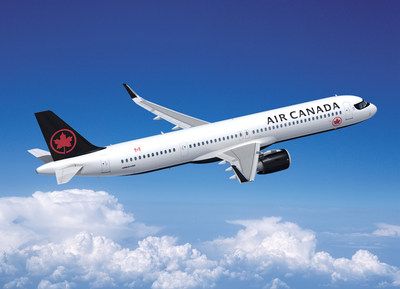
Air Canada is to launch three times a week services from Montreal to Catania, Sicily, Toronto to Budapest (four times a week) Toronto to Shanghai, from Toronto to Shanghai (four times a week) and increase its seasonal three times a week Vancouver–Bangkok service to year-round operation. It will also increase frequency between Montreal and Toulouse from four to seven flights a week. The carrier is also deploying new Airbus A321XLR aircraft on some of its routes.
ACS opens first Saudi office
Air Charter Service has opened its first office in the Kingdom of Saudi Arabia, in the capital, Riyadh. Chief executive of ACS Middle East, Elie Hanna, commented that along with private jets, its cargo teams were well-versed in assisting with the logistical challenges of construction projects, as well as other complex freight operations.






